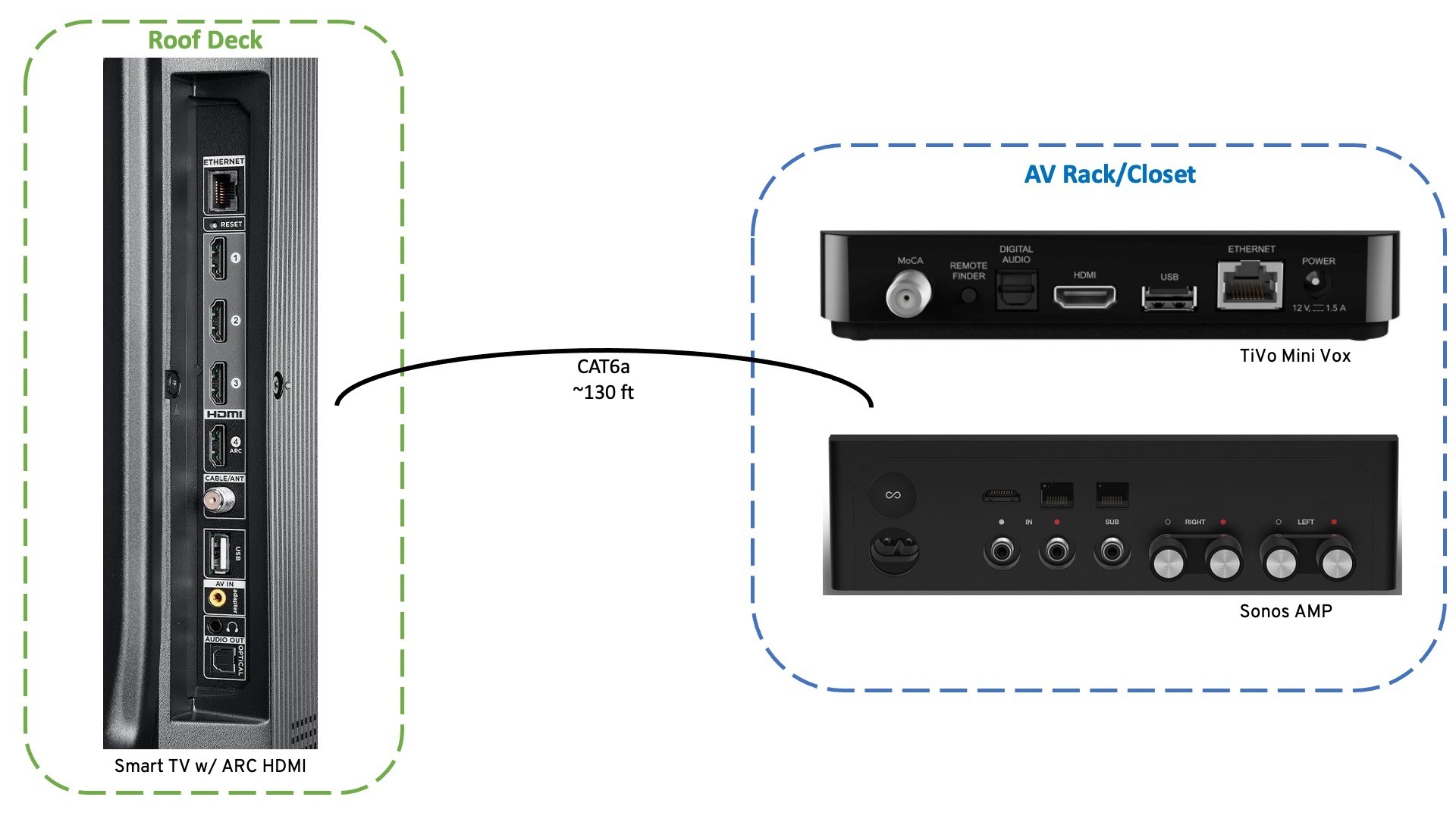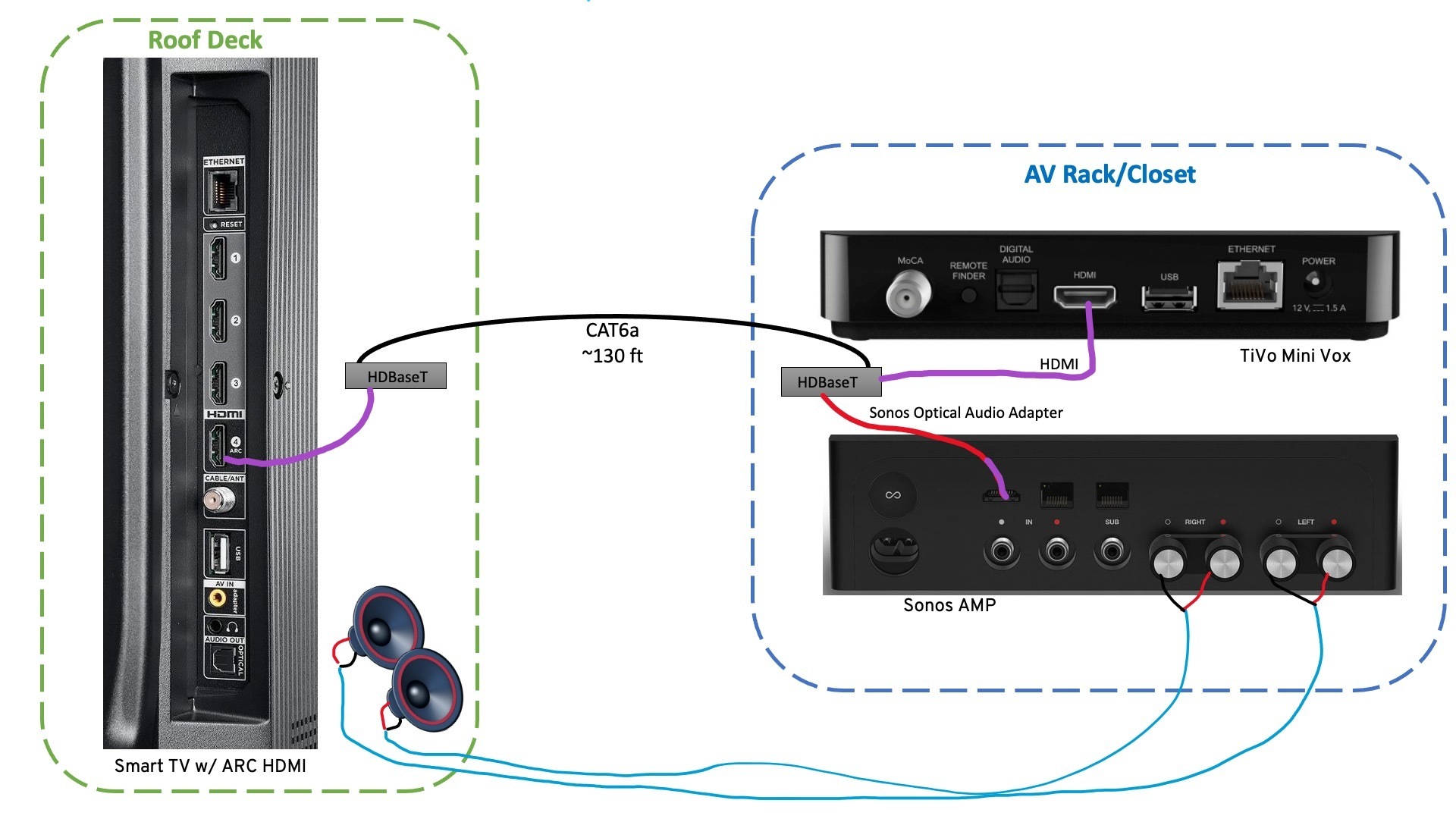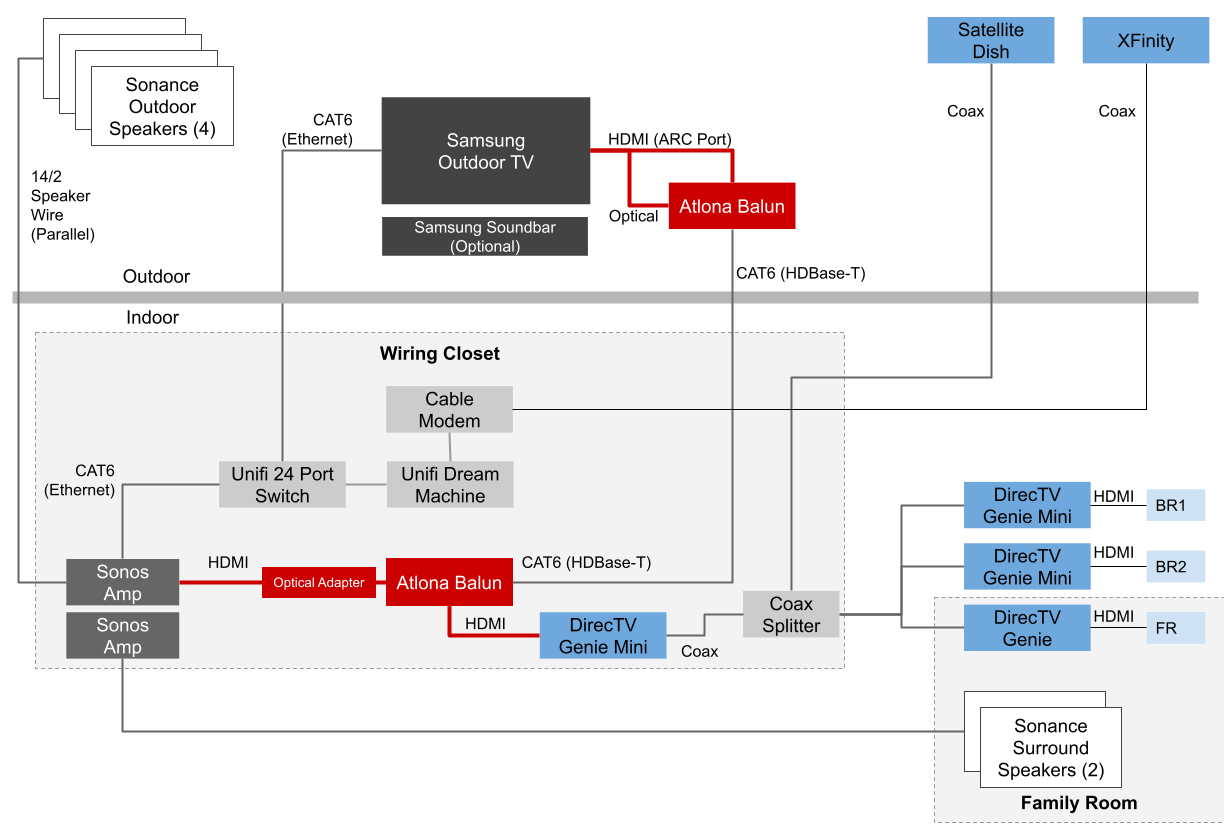I’m trying to determine how to best setup the following scenario. I would like a Smart TV and a TiVo Mini to be able to send their audio signals to a Sonos AMP that powers two speakers. The TV is separated from the AMP and TiVo Mini. There is a single CAT6a cable that runs from the TV to the AV Closet.
Sonos AMP - located inside AV Closet, powers 2 outdoor speakers.
Outdoor Smart TV - outside on rooftop deck, its video sources are its own internal streaming apps and a TiVo Mini Vox. This TV has HDMI ARC as well as additional HDMI ports.
Tivo Mini Vox - as noted above, a video source for the outdoor TV and located in the AV Rack next to the Sonos AMP.
I’m almost certain that i’ll have to use an HDMI extender (HDBaseT or other) as the only cable between the two locations is the CAT6a run that is about 130ft. Since i’d like the TV’s own audio from its streaming apps and the TiVo Mini’s audio to play over the Sonos powered speakers I’m pretty sure I need the HDMI ARC port of the TV to connect back to the Sonos. The rest is where I’m fuzzy, I still need to connect the HDMI port of the TiVo Mini to the TV to send in the TiVo’s video signal. Any guidance or shared experiences would be greatly appreciated!






